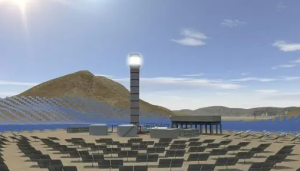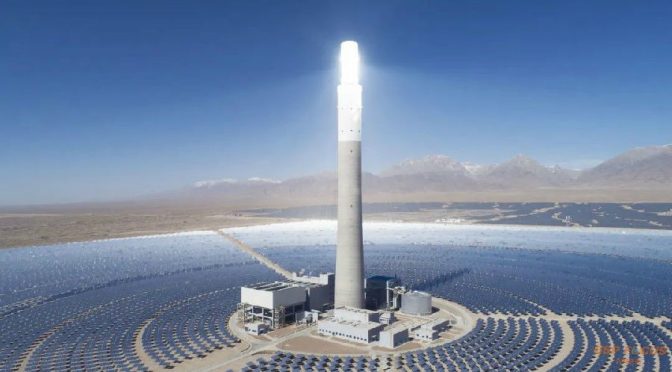The global energy landscape is undergoing a massive transformation, driven by the urgent need to reduce greenhouse gas emissions and mitigate the impacts of climate change. Renewable energy sources, such as solar power, are playing an increasingly important role in this transition. One promising technology that has the potential to revolutionize the solar industry is High-Efficiency Concentrated Solar Power (HECSP). This innovative approach to harnessing the sun’s energy offers significant advantages over traditional photovoltaic (PV) systems, including higher efficiency, lower costs, and the ability to store energy for use when the sun is not shining.

At its core, HECSP technology involves concentrating sunlight onto a small, highly efficient solar cell using mirrors or lenses. This concentrated light is then converted into electricity by the solar cell, which is typically made from advanced materials such as multi-junction solar cells. These cells are capable of converting a much higher percentage of the incoming sunlight into electricity compared to conventional silicon-based PV cells. In fact, some HECSP systems have demonstrated efficiencies of over 40%, compared to around 20% for traditional PV systems.
One of the key advantages of HECSP technology is its ability to generate electricity at a lower cost than traditional PV systems. This is due to several factors, including the use of less expensive materials, such as mirrors or lenses, instead of large quantities of silicon. Additionally, the higher efficiency of HECSP systems means that they can generate more electricity per unit of land area, reducing the overall cost of the electricity produced. This is particularly important in regions with limited land resources or high land costs, such as urban areas or desert regions.
Another major benefit of HECSP technology is its potential for energy storage. Many HECSP systems incorporate a thermal energy storage component, which allows excess heat generated during periods of high sunlight to be stored and used later to produce electricity when the sun is not shining. This is particularly important for grid stability, as it enables HECSP plants to provide a reliable source of electricity even during periods of low solar irradiance, such as cloudy days or at night. This ability to store energy and provide a consistent power output sets HECSP apart from traditional PV systems, which are intermittent by nature and require backup power sources or energy storage systems to maintain grid stability.
There are several HECSP technologies currently under development, each with its own unique approach to concentrating sunlight and converting it into electricity. Some of the most promising technologies include parabolic trough systems, which use curved mirrors to focus sunlight onto a linear receiver containing the solar cell; power tower systems, which use a field of mirrors to direct sunlight onto a central tower-mounted receiver; and dish systems, which use a parabolic dish-shaped reflector to concentrate sunlight onto a small, high-efficiency solar cell.
As the global demand for clean, renewable energy continues to grow, HECSP technology is poised to play a significant role in meeting this demand. Several large-scale HECSP projects are already in operation around the world, and many more are in the planning and development stages. These projects have the potential to not only provide a significant amount of clean electricity but also to drive down the cost of HECSP technology through economies of scale and technological advancements.
In conclusion, High-Efficiency Concentrated Solar Power (HECSP) represents a promising and innovative approach to harnessing the sun’s energy, offering significant advantages over traditional photovoltaic systems. With its higher efficiency, lower costs, and potential for energy storage, HECSP technology has the potential to play a major role in the global transition to a clean, sustainable energy future. As research and development efforts continue to advance this technology, it is likely that we will see even greater improvements in efficiency and cost-effectiveness, further solidifying HECSP’s position as a key player in the renewable energy landscape.


